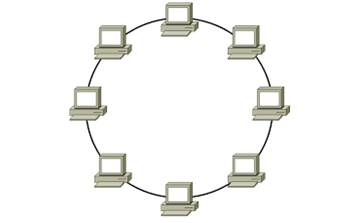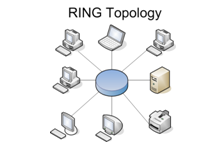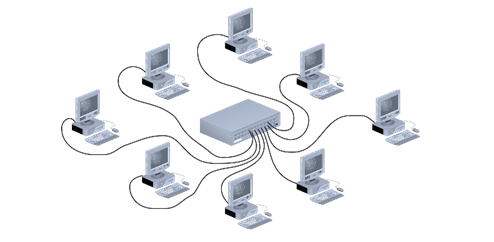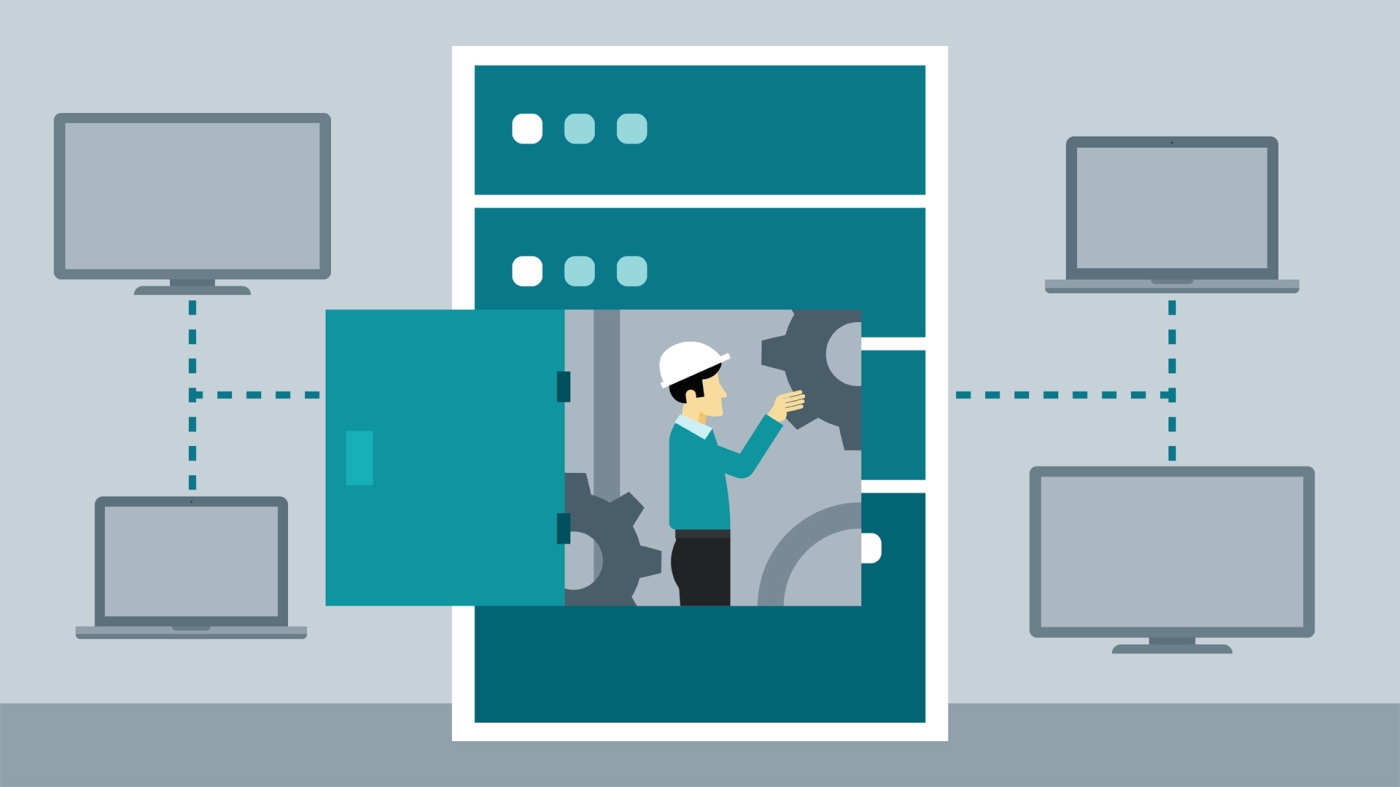It is architecture & design of network. Its is of Two types physical and Logical
It refers to the Layout of connected devices

Think of a Topology as network’s virtual shape or structure.
Physical Topology – Actual layout of the computer cables and other network devices
Logical Topology – The way in which network appears to the devices that use it.
A physical topology is how they are actually interconnected with wires and cables. For example, in a shared Ethernet network that uses hubs rather than switches, the logical topology appears as if every node is connected to a common bus that runs from node to node.
 1. Bus Topology
1. Bus Topology
It uses a trunk or a backbone to which all of the computers on the network connect.Systems connect to this backbone using T connectors or taps
The cable is terminated at both ends using Terminator.
It is used when Netwrok installation is small simple or Temporary. Years ago Thinnet and Thicknet used this topology.
Coaxial Cable (10Base2, 10Base5) is used in this type of topology

| Advantages | Disadvantages |
| Cheap and easy to implement | Difficult to troubleshoot |
| Do not require special networking devices, It only Required LAN cards and T connectors or BNC connectors | In bus topology only one computer can transmit and others have to wait. |
| Requires less cabling hence simple | Use of BNC connectors attenuates the signal. |
| Network disruption when computer is added or Removed. | |
| A break in the cable will prevent all systems from accessing the network, In short if anything fails entire netork gets damaged |
If all computers Transmit at the same time it can cause collision to avoid collision CSMA/CD is used.
CSMA/CD means Carrier Sense Multiple Access with Collision Detection
2. Ring Topology
In Ring topology data travels in circular fashion from one computer to another computer on the network. It is a closed network in which every host is connected to two other adjacent host. Typically FDDI, SONET or Token Ring technology are used to implement a ring network.

Ring networks are most commonly wired in a physical star configuration.

Token ring has Multi-station Access Unit (MSAU or MAU), equivalent to hub or Switch. MSAU Performs the token circulation internally.
| Advantages | Disadvantages |
| Cable faults are easily located, making troubleshooting easier. | Expansion to the network can cause network disruption.Also if one computer fails entire network fails. |
| Ring networks are moderately easy to install | A single break in the cable can disrupt the entire network. |
| No one host/Pc can monpolize the entire network. |
It uses Token to transfer data.
3. Star Topology
Nowadays the most popular topology which is used is star topology. All computers/devices are connected to the centralised device known as hub or switch.
Each device requires a single cable point to point connection between device and hub. It is used in network where end points are directly reachable.

| Advantages | Disadvantages |
| Easily expanded without disruption. | It requires more cables. As each device requires a separate cable to go upto the centralized hub or switch. |
| Cabe failure affects only that specific user or host. | A central connecting device allows for a single point of failure. |
| Easy to troubleshoot and isolate problems. | More difficult to implement. |
4. Tree Topology
It is a Combination of Bus topology and Star Topology. The Bus is used as a backbone and all the centralized devices are connected to the backbone through cables.
Tree Topology allows for expansion of an existing Network.

| Advantages | Disadvantages |
| Point to point wiring for individual segments. | Overall Length of each cable is limited by the type of cabling used |
| Easy to Troubleshoot | If the back bone line Breaks the entire Segment goes down |
5. Mesh Topology
In Mesh Topology each computer connects to evry other computer directly. It has high level of redundancy, Genrally used in WAN. Wiring is very complicated.
There are two types
- Full Mesh– Where each device is connected to every other device.

- Partial Mesh– Where not all devices are connected to every other devices.

| Advantages | Disadvantages |
| Provides redundant paths between devices. | More cabling |
| Complicated Implementation |
6. Hybrid Topology
It is a combination of all topolgies. A hybrid topology is a type of network topology that uses two or more other network topologies, including bus topology, mesh topology, ring topology, star topology, and tree topology.It is genrally seen where one topology is converted to another topology , for eg . bus topology to ring topology


Leave a comment